Anais Moller
The LSST Dark Energy Science Collaboration and the COIN collaboration
Finding active galactic nuclei through Fink
Nov 20, 2022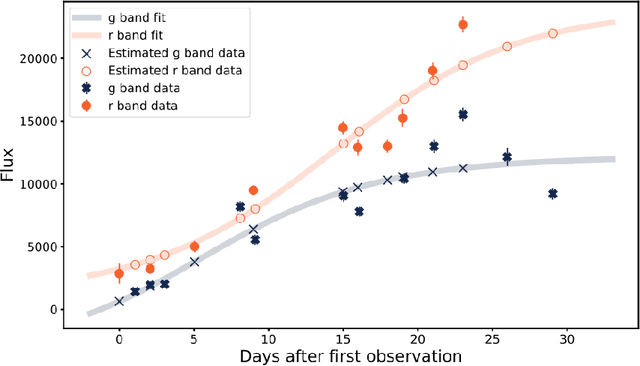
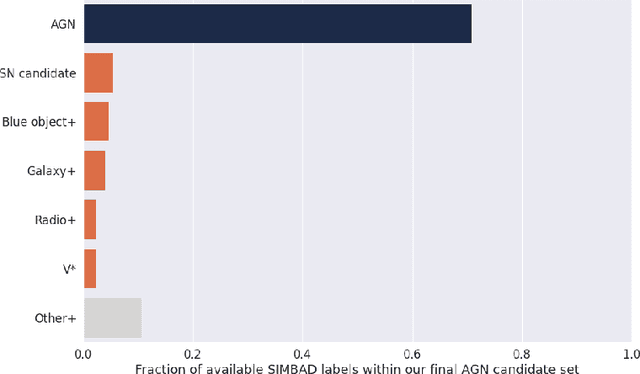
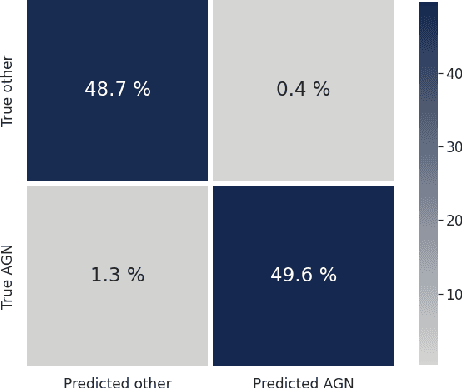
Abstract:We present the Active Galactic Nuclei (AGN) classifier as currently implemented within the Fink broker. Features were built upon summary statistics of available photometric points, as well as color estimation enabled by symbolic regression. The learning stage includes an active learning loop, used to build an optimized training sample from labels reported in astronomical catalogs. Using this method to classify real alerts from the Zwicky Transient Facility (ZTF), we achieved 98.0% accuracy, 93.8% precision and 88.5% recall. We also describe the modifications necessary to enable processing data from the upcoming Vera C. Rubin Observatory Large Survey of Space and Time (LSST), and apply them to the training sample of the Extended LSST Astronomical Time-series Classification Challenge (ELAsTiCC). Results show that our designed feature space enables high performances of traditional machine learning algorithms in this binary classification task.
A Convolutional Neural Network Approach to Supernova Time-Series Classification
Jul 19, 2022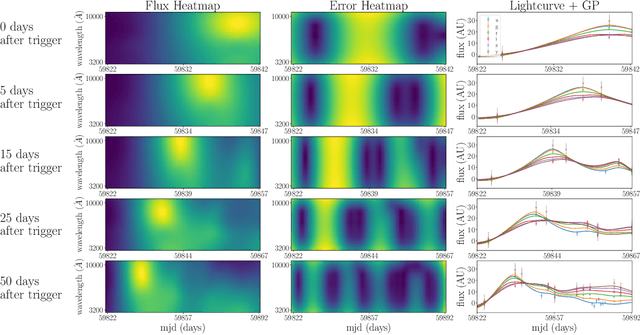

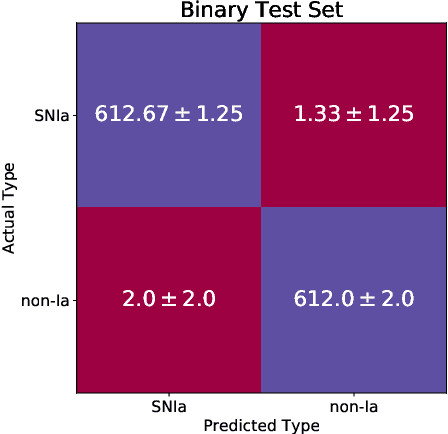

Abstract:One of the brightest objects in the universe, supernovae (SNe) are powerful explosions marking the end of a star's lifetime. Supernova (SN) type is defined by spectroscopic emission lines, but obtaining spectroscopy is often logistically unfeasible. Thus, the ability to identify SNe by type using time-series image data alone is crucial, especially in light of the increasing breadth and depth of upcoming telescopes. We present a convolutional neural network method for fast supernova time-series classification, with observed brightness data smoothed in both the wavelength and time directions with Gaussian process regression. We apply this method to full duration and truncated SN time-series, to simulate retrospective as well as real-time classification performance. Retrospective classification is used to differentiate cosmologically useful Type Ia SNe from other SN types, and this method achieves >99% accuracy on this task. We are also able to differentiate between 6 SN types with 60% accuracy given only two nights of data and 98% accuracy retrospectively.
Active learning with RESSPECT: Resource allocation for extragalactic astronomical transients
Oct 26, 2020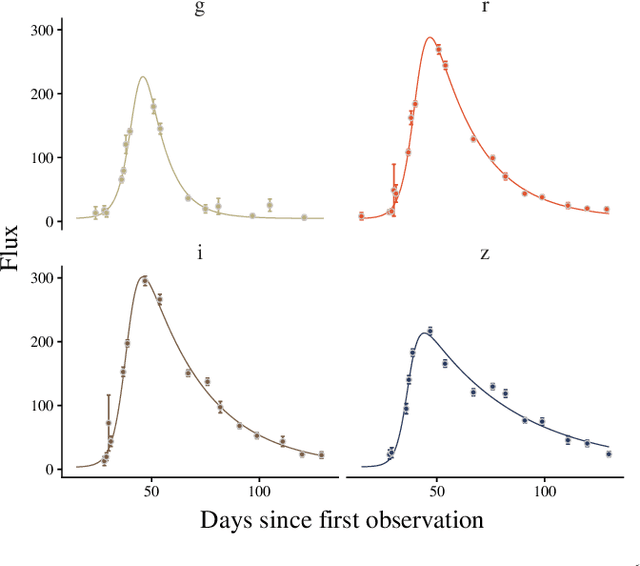

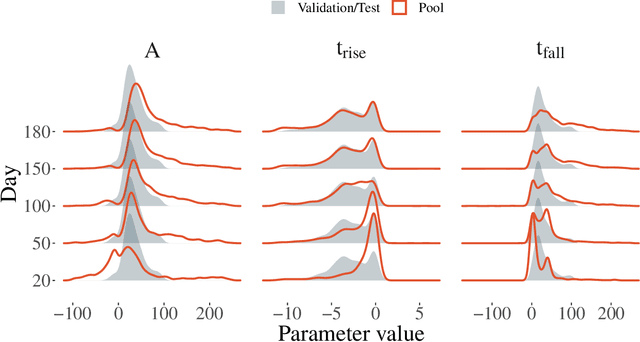
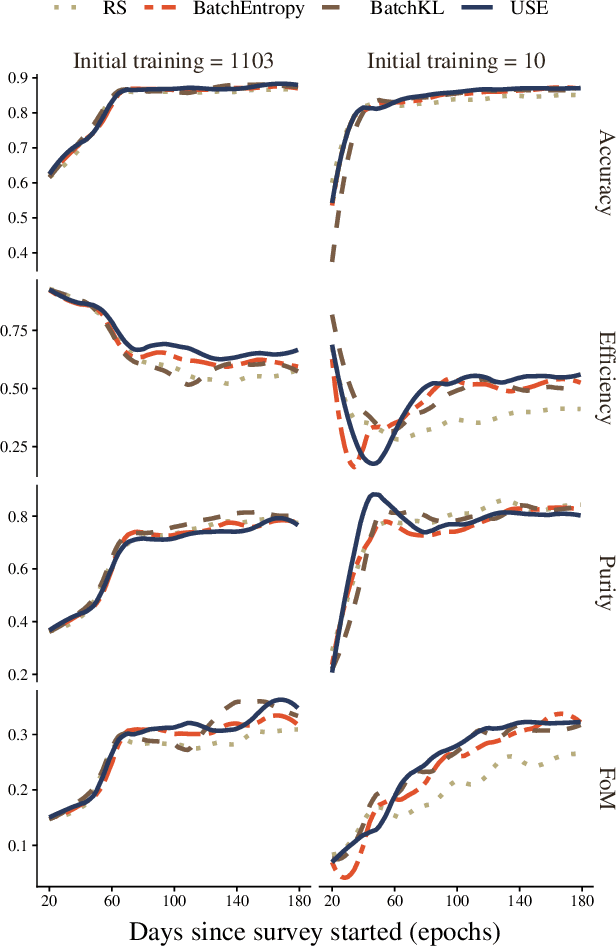
Abstract:The recent increase in volume and complexity of available astronomical data has led to a wide use of supervised machine learning techniques. Active learning strategies have been proposed as an alternative to optimize the distribution of scarce labeling resources. However, due to the specific conditions in which labels can be acquired, fundamental assumptions, such as sample representativeness and labeling cost stability cannot be fulfilled. The Recommendation System for Spectroscopic follow-up (RESSPECT) project aims to enable the construction of optimized training samples for the Rubin Observatory Legacy Survey of Space and Time (LSST), taking into account a realistic description of the astronomical data environment. In this work, we test the robustness of active learning techniques in a realistic simulated astronomical data scenario. Our experiment takes into account the evolution of training and pool samples, different costs per object, and two different sources of budget. Results show that traditional active learning strategies significantly outperform random sampling. Nevertheless, more complex batch strategies are not able to significantly overcome simple uncertainty sampling techniques. Our findings illustrate three important points: 1) active learning strategies are a powerful tool to optimize the label-acquisition task in astronomy, 2) for upcoming large surveys like LSST, such techniques allow us to tailor the construction of the training sample for the first day of the survey, and 3) the peculiar data environment related to the detection of astronomical transients is a fertile ground that calls for the development of tailored machine learning algorithms.
 Add to Chrome
Add to Chrome Add to Firefox
Add to Firefox Add to Edge
Add to Edge